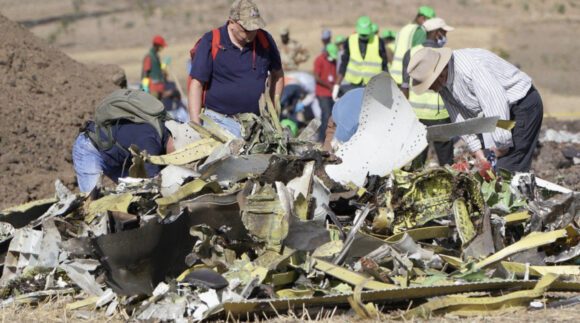Russia´s aviation authority, the Russian Federal Air Transport Agency, announced on October 6 an unplanned inspection of Transaero. Local legislation allows authorities to launch such an inspection if they understand the carrier is in a poor financial situation and which could impair flight safety situation.
The agency can suspend Transaero’s AOC. Kommersant newspaper points out the audit is too late, the market has been discussed Transaero´s hazardous strategy for the last several years. The announced and then crashed and burned deal with Aeroflot seemed a mess to Western eyes, though it is clearly not a mess to the Russian aviation market industry. The Russia´s government remembers the AirUnion alliance collapse in 2008 and did did not want a repeat. So the main question this time is how to carry all of Transaero ticket holders in case of the airline ceasing flights?
At present Transaero competes with Aeroflot: the first private owned Russian airline against the state-owned carrier. But despite Transaero being privately owned, it had and used the advantage of being close to powerful people. Officially the carrier was launched by Alexander Pleshakov and his wife Olga at the beginning of 90´s. But the Russian market knows that the biggest role in the carrier´s development was played by Tatiana Anodina, Alexander Pleshakov´s mother, a head of Interstate Aviation Committee (IAC) and a powerful woman in the local airline market. She officially owned 3% of Transaero shares until September 2015.
Transaero enjoyed use of “non-market advances” (as they are called in Russia) of being close to power. In 2013, Aeroflot needed a type certificate from IAC to operate their 777-300. They did not get it in time and had to postpone 777-300 operations (not for long). As usual, nobody had proof, but Russian media thought Transaero’s influence at IAC might have helped to slowdown the certificate issue.
The proximity to power allowed the private owned commercial airline get state access and commercial banks money. During the last three years financial community experts mentioned that Transaero’s annual results showed the company´s financial situation was not good but that was not a problem for Transaero’s relationship with its banks. The carrier could get new loans and extended old ones. Also the reason why the banks behaved like that was a Russian airline business peculiarity. If you do not provide the carrier with new money you will fail to get previous loans repaid. It is impossible to stop an airline as its main assets are passengers (Most of the fleet is leased, not owned). Transaero at the same time invested in its Imperial class and experimented with discount class programs. It was blamed for “dumping” not only by Aeroflot by also by other market players like S7 Airlines. But at the end of the day it was always able to get money for the next year. In September 2015 Sberbank head Herman Gref said Transaero overall debt reached RUB250bn (~$3.8 at the beginning of September 2015). That is debt to banks and lessors, and excludes suppliers and airports.
The situation dramatically changed in 2014 with Western sanctions and the market fall. At the end of the year Transaero asked for state guarantees for a new loan. The carrier denied it when the situation leaked to the press. Finally, it got the guarantees and got a RUB9bn loan from VTB, a state owned bank. But no cutting costs programs were announced, Transaero did not reduce its fleet. It announced a re-branding and took delivery of its first A320 aircraft. At the end of summer 2015 whispers about new Transaero need for state guarantees appeared again. But this time the state decided to solve the problem different way. Aeroflot was set up as responsible for solving the Transaero problem.
Being a state-owned company in Russia provides advantages and some disadvantages. When the Russian government tried to find a way to escape social problems with Transaero passengers they decided to allow Aeroflot to the solve the problem and carry abandoned travelers.
Aeroflot announced a merger with Transaero on September 1 and appointed its manager Dmitry Saprykin to manage the carrier. As Transaero was out of cash at the time, it was Aeroflot which supported its business from September 1. The sum of money spent has not been disclosed.
Of course, Aeroflot wins from the situation when its largest competitor leaves the market, but other carriers, like UTair, S7 Airlines and Ural Airlines also benefit. Aeroflot promised to take care of Transaero passengers who have tickets through December 15, it will have to transport them or provide refunds. But other market players joined the process. We have no idea if that was their decision or the government politely asked them to help. There is the question if Aeroflot wins something more than a larger market share. Most of Transaero aircraft are leased and the those they owned were used as security for banks.
Aeroflot promised to give jobs for some Transaero staff, but the market is falling and it is believed Aeroflot staff was too large even before the market downturn. Also there are rumors Transaero is behind with summer salaries so it will be Aeroflot which has to cover that, too.
The attempt to solve the crisis without abandoned passengers will cost not only Aeroflot but also S7 Airlines, UTair and others attracted by the Russian Ministry of Transportation process. But the Russian government could not find a better outcome. There are big questions about the “win” and its cost.
Views: 1



